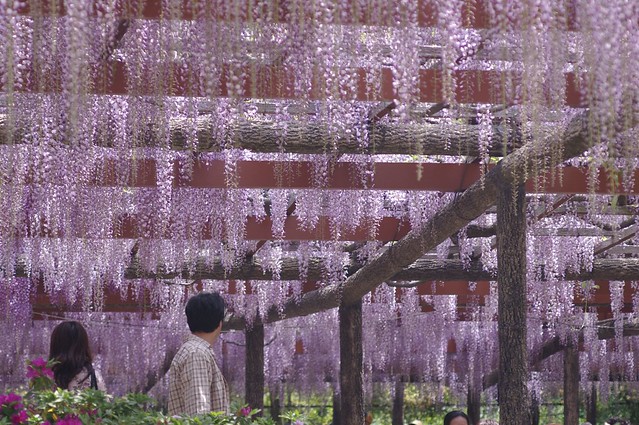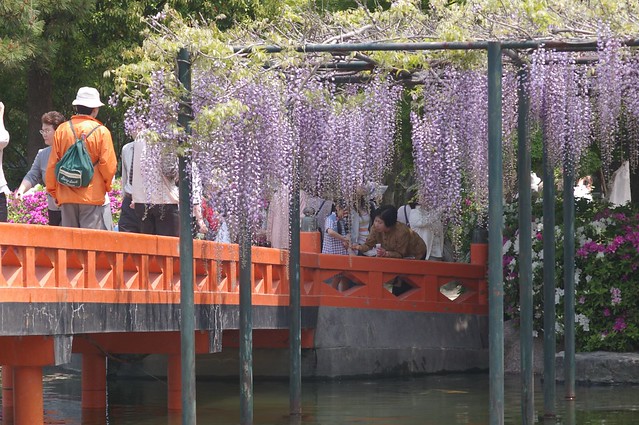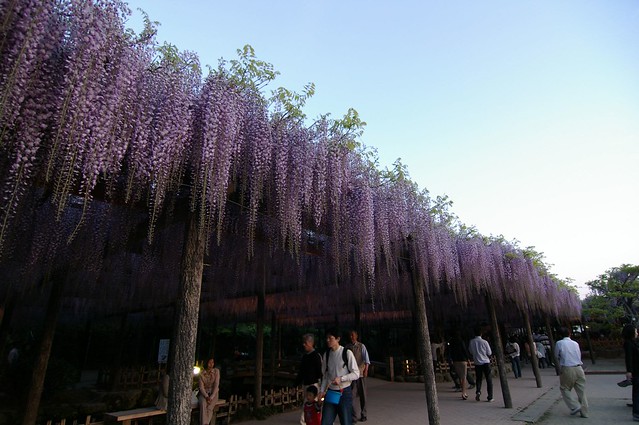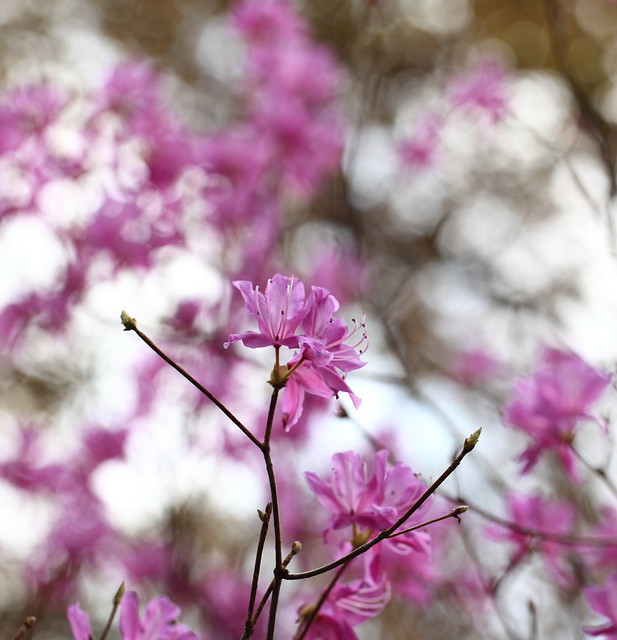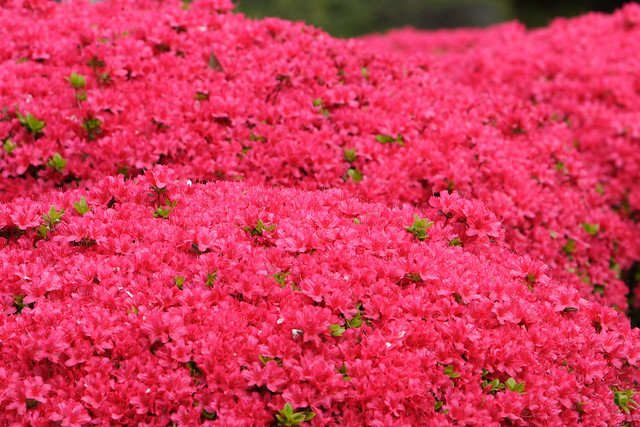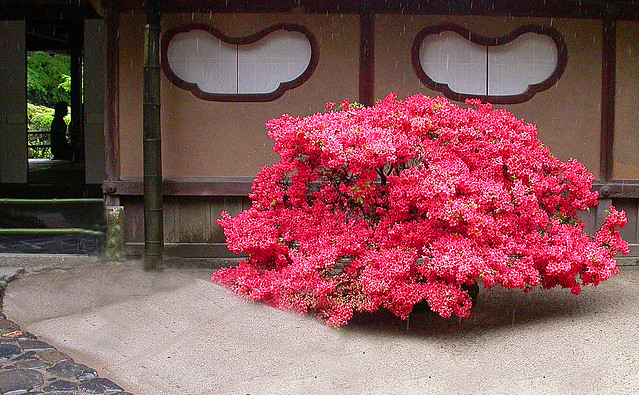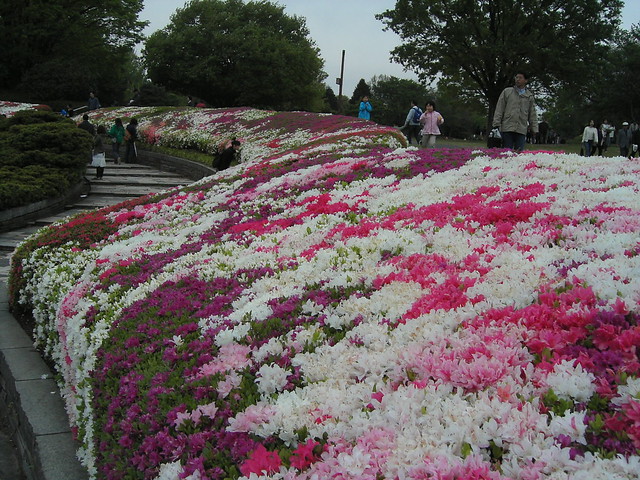The 26th National Confectionary Exposition in Hiroshima is being held from April 19 to May 12. The exposition is held once every four years. It exhibits and sells onfections all over Japan. The exhibits include more than 150 Japanese-style confectionary artworks, "Itsukushima Shrine" made by confectioners of western and Japanese-style confectionery. It's very crowded on holidays.
Mibu Kyogen(壬生狂言) is being held at the Mibu-dera Temple in Kyoto from April 21 to 29.
It's a silent play created to propagate Buddhism to ordinary people. It became a type of entertainment in the Edo Period. Buddhist priest Engaku Shonin is said to have begun the Mibu Kyogen in 1300. This annual performance has been held uninterruptedly since 1300. It has been designated a significant intangible folk cultural asset of Japan. Kyoto people call it "Mibu-san no Kan-den-den".
The devotional exercises are performed morning, afternoon, and night from April 21 to 29. Mibu Kyogen is performed as the afternoon exercises during the period. The performance is dedicated to Ksitigarbha(延命地蔵菩薩), the principal image of the temple.
The reason the play has no dialogue was because players had to preach Buddhism to the crowd simply without loudspeakers. A Buddhist sutra was originally chanted during the performance. Some say that the play has no dialogue because the crowd couldn't hear the voice due to the chanting.
Performers in masks perform with the sound of bells, drums, and flutes. The performance consists of 30 programs in total. Performers throw rice crackers into the audience in Atago mairi(Pilgrimage to Mount Atago), throw paper yarn into the audience in "Tsuchigumo(The Demon Spider)", walk the tightrope in "Nue(Nightmare Bird)", smash unglazed plates in "Horaku wari(Smashing Plates)".
First Horaku wari(Smashing Plates), and then four of other programs are performed every day from April 21 to 29.
Mibu Kyogen is also performed for two days during the Setsubun Festival (February), and for three days in October. At the Setsubun Festival, only one program "Setsubun" is performed.
The October performance used to be done irregularly. Although being discontinued in 1871, it was resumed in 1974.
Members of the Mibu Dainenbutsu Association perform the play. Mibu villagers used to perform the play. About 40 people living around Mibu-dera do it.
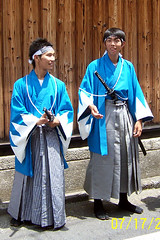 |
| Shinsengumi by MShades /flickr |
Mibu-dera is also known for its connection to the Shinsengumi(新撰組) which is an armed group who guarded Kyoto during the end of Tokugawa Shogunate. The group included lordless samurai warriors and commoners. Now Shinsengumi is better known than Mibu Kyogen.
The Yagi family's house was used as a military post of Shinsengumi.
Shinsen-en Kyogen(神泉苑狂言) is performed at Shinsen-en(神泉苑) in Kyoto from May 1 to 4. Admission is free.
The Mibu-dera's head priest at the time forced through reforms of the association in 1900.
 |
| Base of Shinsengumi at Yagi-House, Mibu by shinji_w /flickr |
Some of its members rebelled against the reforms and formed a different organization. They started Shinsen-en Kyogen in 1905. Now the head of the Yagi family is the facilitator for the two organizations.
Shinsen-en Festival is held on May 5. The festival includes carrying of a portable shrine, children's parade, performances of Japanese drums and dance.
Horaku wari(炮烙割り, Smashing Plates)
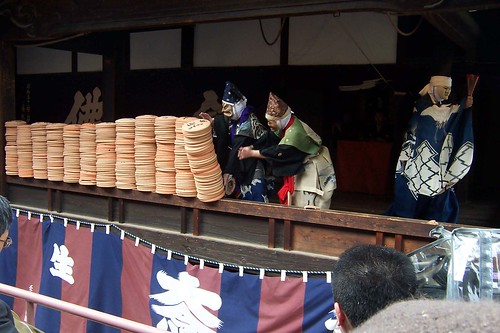 |
| Mibu Kyogen 02 by MShades /flickr |
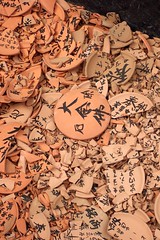 |
| Mibu Kyogen plates by MShades /flickr (Horaku(炮烙, unglazed plate)) |
In this program, these dedicated plates are broken. Breaking the plates protects dedicators against evils.
Hanaori(花折, Breaking Cherry Branches)
A young monk, a master and his servant engage in witty dialogue. This is a lesson to drinkers. The monk's mask was dedicated by Ito Jakuchu(伊藤 若冲, 1716–1800) who was a famous painter.
 |
| IMGP8810 by SnippyHolloW /flickr Hanaori(花折, Breaking Cherry Branches) |
Dojo-ji(道成寺, Dojo-ji Temple)
A woman(Kiyohime) falls in love with a handsome monk (Anchin) at first sight, but he is on his way to a temple. It is very troublesome for him. He lies to her and flees from her. Knowing that she is deceived, she flies into a fury and turns into a huge serpent. He flees into the Dojo-ji Temple and hides underneath the temple bell. The serpent winds itself around the bell and burns him to death.
This program is a sequel of this legend. The temple places a new temple bell. Kiyohime's vengeful ghost appears and hides underneath the bell. Then the bell falls with a loud crash. The main priest prayed absorbedly, and the bell is lifted. He exorcises the ghost by prayer.
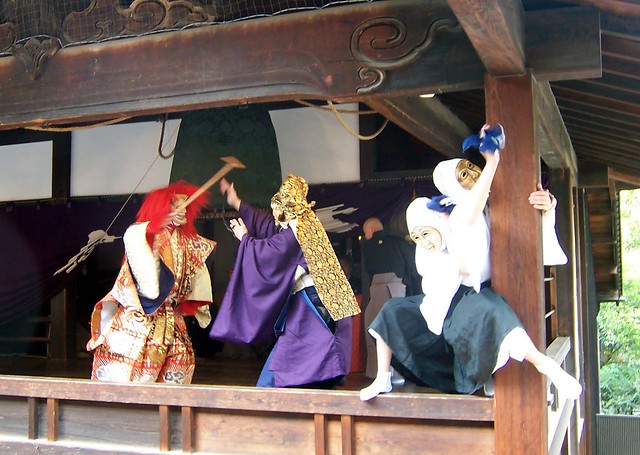 |
| Mibu Kyogen 07 by MShades /flickr Dojo-ji(道成寺, Dojo-ji Temple) |



























